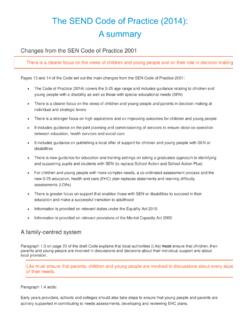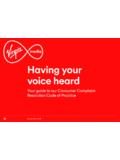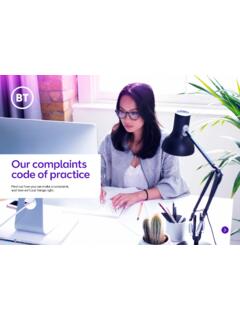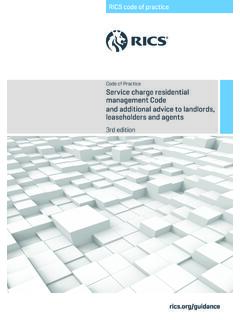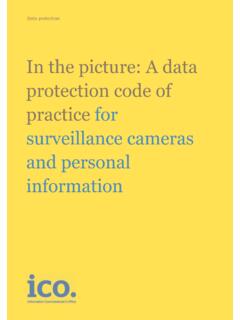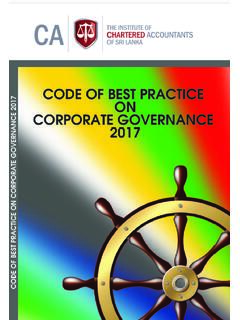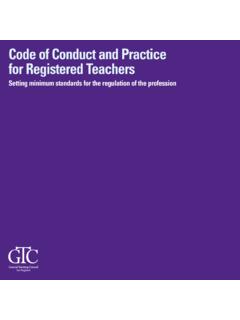Transcription of Schools: guide to the 0 to 25 SEND code of practice
1 Schools: guide to the 0 to 25. SEND code of practice Advice for school governing bodies/proprietors, senior leadership teams, SENCOs and classroom staff September 2014. Contents Foreword 3. About this guide 4. Context 5. Principles underlying the code 6. Working together across education, health and care for joint outcomes 7. The Local Offer 8. Improving outcomes high aspirations and expectations for children with SEN 10. Identifying SEN in schools 12. SEN support in schools 15. Preparing for adulthood from the earliest years 21. Education, health and care needs assessments and plans 25. Children and young people in specific circumstances 29. Resolving disagreements 32. Useful resources 33. 2. Foreword Our vision for children with special educational needs and disabilities is the same as for all children that they achieve well in their early years, at school and college, make a good transition to adulthood and lead contented and fulfilled lives.
2 The current system is not working for all families. The reforms introduced by the Children and Families Act 2014. aim to change this, with a focus on greater co-operation between education, health and social care and a greater focus on the outcomes which will make a real difference to how a child or young person lives their life. Schools are vital to the success of these changes and to achieving our vision for a new system. Currently, too many children and young people do not get the support they need and support does not focus sufficiently on helping them to achieve their goals, including paid employment and independent living. With the right support and high aspirations, the vast majority of children and young people who have SEN or disabilities can achieve well and make a successful transition into adulthood, whether into employment, further or higher education or training. Building on best practice , the 0-25 SEND code of practice sets clear expectations on schools to deliver a whole school approach to SEN, with good quality teaching as a first response and a clear focus on outcomes.
3 Teachers are at the heart of the new SEN. support system, supported by the strategic role of SENCOs, with strong leadership from head teachers and governors. For the reforms to achieve a real impact, it's about long-term culture change, about having a workforce which is confident and skilled and about children and young people with SEN and disabilities having a real voice. This guide to the code will help you understand what your duties are under the Children and Families Act 2014 and help you navigate the full 0-25 SEND code of practice . It will ensure you are doing everything you should be and everything you can, to improve outcomes for this group of children and young people. EDWARD TIMPSON. Parliamentary Under-Secretary of State for Children and Families 3. About this guide This guide is designed to help those listed below to understand their statutory duties and responsibilities under the reforms in the Children and Families Act 2014 in relation to children in their care who have or may have special educational needs or disabilities (SEND): Governing bodies of schools, including non-maintained special schools Proprietors of academies (including free schools, University Technical Colleges and Studio Schools).
4 The management committees of pupil referral units Independent schools and independent specialist providers approved under Section 41 of the Children and Families Act 2014. In this guide schools' refers to all of the above, unless otherwise stated. This guide (and the full code of practice ) is also relevant for school leadership teams, SEN co-ordinators (SENCOs) and all classroom teachers, since it is they who will have the most day-to-day contact with pupils who have SEN or disabilities and will be responsible for delivering programmes of support for them. It is important that the entire school community understands the reforms in the 0-25 SEND code of practice and adopts a whole school' approach to supporting pupils who have SEN or disabilities. The guide draws out elements of the full 0-25 SEND code of practice that relate to schools, as well as wider aspects that all those who work with children and young people with SEN or disabilities and their families should have regard to.
5 This document is not a substitute for the full code of practice and has no statutory basis. The main duties that schools must have regard to are highlighted here and links are given to the relevant sections of the code it is important that schools familiarise themselves with the full version of the statutory guidance in the code in addition to reading this guide . Expiry or review date This guide will be kept under review and updated when necessary. 4. Context The Children and Families Act 2014 provides, from September 2014, for: a clear and transparent Local Offer' of services across education, health and social care with children, young people and parents involved in preparing and reviewing it services across education, health and care to be jointly commissioned Education, Health and Care (EHC) plans to replace statements and Learning Difficulty Assessments (LDAs) with the option of a Personal Budget for families and young people who want one new statutory rights for young people in further education, including the right to request a particular institution is named in their EHC plan and the right to appeal to the First-tier Tribunal (SEN and Disability)
6 , and a stronger focus on preparing for adulthood, including better planning for transition into paid employment and independent living and between children's and adults services From 1 September 2014 transitional arrangements will be in place to support the changeover from the current system in a phased and ordered way, to facilitate the transfer of those with statements of special educational needs to EHC plans. It is expected that all those who have a statement, and who would have continued to have one under the current system, will be transferred to an EHC plan no-one should lose their statement and not have it replaced with an EHC plan simply because the system is changing. A child or young person has SEN if they have a learning difficulty or disability which calls for special educational provision to be made for him or her. Children and young people who have SEN may also have a disability under the Equality Act 2010. Where a child or young person is covered by SEN and disability legislation, reasonable adjustments and access arrangements should be considered as part of SEN planning and review.
7 More information on the background to the SEN reforms is given in the Introduction to the 0-25 SEND code of practice . 5. Principles underlying the code The 0-25 SEND code of practice describes the principles that should be observed by all professionals working with children and young people who have SEN or disabilities. These include: taking into account the views of children, young people and their families enabling children, young people and their parents to participate in decision-making collaborating with partners in education, health and social care to provide support identifying the needs of children and young people making high quality provision to meet the needs of children and young people focusing on inclusive practices and removing barriers to learning helping children and young people to prepare for adulthood More information on the principles that underpin the Children and Families Act and the guidance is given in Chapter 1, Principles, in the 0-25 SEND code of practice .
8 6. Working together across education, health and care for joint outcomes Under Section 25 of the Children and Families Act 2014, local authorities have a duty to ensure integration between educational provision and training provision, health and social care provision where this would promote wellbeing and improve the quality of provision for disabled children and young people and those with SEN. This requires close co-operation with education, health and social care partners to research, plan, commission and review services. These duties on local authorities are reciprocal education, health and social care partners also have a duty to co-operate with the local authority on planning, commissioning and reviewing local services. For schools, this will involve contributing to the educational provision described in the local authority's Local Offer (see below), and will also involve taking part in wider strategic planning for education in the local area.
9 Some schools may act as commissioners of services for students with SEN or disabilities in their own right. This could include services such as speech and language therapy, pastoral care or counselling services. Joint commissioning arrangements should reflect this local commissioning and should ensure that services commissioned by schools are suitably supported to deliver positive outcomes for children and young people. More information about joint commissioning is given in Chapter 3, Working together across education, health and care for joint outcomes, in the 0-25 SEND code of practice . 7. The Local Offer Local authorities have a statutory duty to develop and publish a Local Offer, setting out in one place information about the support they expect to be available in their area across education, health and social care for children and young people in their area who have SEN or are disabled, including those who do not have EHC plans.
10 The Local Offer has two key purposes: To provide clear, comprehensive, accessible and up-to-date information about the available provision and how to access it, and To make provision more responsive to local needs and aspirations by directly involving disabled children and those with SEN and their parents, and disabled young people and those with SEN, and service providers in its development and review Local authorities and their partner bodies and agencies, including schools, must co- operate with each other in the development and review of the Local Offer. This is essential so that the Local Offer provides a comprehensive, transparent and accessible picture of the range of services available. The Local Offer must include, amongst other information, the following: special educational, health and social care provision for children and young people with SEN or disabilities this should include online and blended learning other educational provision, for example sports or arts provision, paired reading schemes arrangements for resolving disagreements and for mediation, and details about making complaints arrangements for travel to and from schools support to help children and young people move between phases of education (for example from early years to school, from primary to secondary).










